CollectionsThe Irish elk: when and why did this giant deer go extinct and what did it look like?
By Beth Askham and Lisa Hendry
The giant deer, Megaloceros giganteus, no longer roams Europe, but fossil bones and antlers in the Museum's collection hold clues as to how this spectacular prehistoric deer behaved, where it lived and why it went extinct.
Get the facts on Europe's biggest ever deer and discover why it's sometimes called the Irish elk.
More than 20,000 years ago, early humans were drawing giant deer on the walls of caves in what is now Southern France. It's hard to imagine they weren't motivated by awe. Standing two metres tall at the shoulder - the height of an average doorframe - these enormous deer would have been a captivating sight. Especially the males with their huge antlers up to three and a half metres in width.
The earliest fossil record of the giant deer is from 400,000 years ago and the last fossil record is from 8,000 years ago. It is thought the species probably slowly died out due to a changing climate.
Why were giant deer antlers so big?
The enormous antlers of the giant deer were not only difficult to manoeuvre but also took a lot energy - and therefore food - to grow. So why did the species bother to grow them so big?
Professor Adrian Lister, Museum expert on extinct megafauna, says these antlers became as big as they did because of sexual selection.
Through genetic analysis, Adrian and his colleagues have found that the closest living relative of the giant deer is the fallow deer. He thinks both species might have found a mate in similar ways.
During the mating season, the males of the fallow deer form what's called a lek. This is an area where females gather and males compete by roaring, parading side by side and fighting by locking antlers and pushing and twisting each other.
'In this display of strength, bigger antlers were probably more intimidating to other males and more desirable to the females, who would wander into the lek to choose their mate,' says Adrian.
The male deer shed their antlers in spring then grew a new pair during the summer months, ready for the mating season in autumn.
Males had to be built to carry the heavy antlers. We know from looking at their fossils that the top of their skulls was extra thick and that they had very sturdy neck vertebrae. Fossils also indicate that the vertebrae in the shoulder region were elongated, suggesting males had a hump on their backs with muscles that might have helped to carry the weight of their huge antlers.
The antlers of the giant deer were so big that a male with antlers wouldn't have been able to walk through a dense forest without getting snagged on trees and branches. As a result, they preferred to roam in parkland - a mixture of open woodlands and grasslands.
When and why did giant deer go extinct?
Like many of the extinctions we see happening today, the giant deer was probably pushed to extinction by a combination of pressures.
An animal or plant might be able to adapt to one or two environmental changes but any more than that and it becomes harder to survive.
The first wave of extinction for the giant deer was around 12,000 years ago when it disappeared from Ireland, Britain and most of Europe. During this time, at the end of the Ice Age, the climate became very cold and severe, and food for the deer would have been very scarce.
The added pressure of having to find enough food to grow their enormous antlers might have made it difficult for the deer to adapt and survive.
But this period wasn't the end of the story for the giant deer. After carbon dating a fossil bone collected from Central Russia, Adrian found that there was one remaining enclave of this species living there until around 8,000 years ago.
Adrian explains, 'I was looking through the Russian collection of fossil mammals and I found a partial giant deer skeleton acquired by the Museum around 1880. Nobody knew about this specimen and it looked very fresh.'
'It is very unusual for a partial skeleton to come from outside of Ireland and this specimen's label said it was found in a peat deposit, which immediately suggested postglacial, so after the end of the Ice Age.'
'We carbon dated it to find its age and it came out as only 8,000 years old, which is about 4,000 years later than what we thought the extinction date was.'
The extinction of this last remaining population of giant deer might have been due to a warming climate - the opposite of what had caused their disappearance from most of Europe. As forests spread in this warmer world, there was less parkland and grassland for the deer to roam and graze.
Another pressure might have come from humans. Although we have very little evidence of people hunting giant deer, we know that Neolithic settlements were expanding at that time and removing large areas of natural vegetation.
What did giant deer eat?
Tiny pits and scratches on fossil teeth can tell us what the giant deer ate. Adrian's collaborators have looked closely at fossil teeth under an electron microscope and discovered that the deer ate a mixed herbivorous diet of grass and tree leaves.
What else can fossils and cave art tell us about the giant deer?
Cave art shows us what these deer might have looked like. In Cougnac in the South of France, cave drawings show a dark ring around the neck of a giant deer and stripes going from its neck to its belly.
Adrian says that there are giant deer fossil bones from Kents Cavern in Devon in the Museum's collection with marks on that suggest they were eaten by hyenas.
He adds, 'Caves are places where you find a lot of these Ice Age mammal bones, mainly because they've been brought in by predators.'
Why was the giant deer once called the Irish elk?
The giant deer is sometimes referred to as the Irish elk or Irish deer, but these names are misleading because this extinct deer species lived all over Europe. It also wasn't an elk, which is a different species of deer. So where did these names come from?
Even though the giant deer once lived throughout Europe, most of the preserved antlers and skeletons from this species have been found in Ireland. Conditions here at the end of the last Ice Age were perfect for preserving fossils.
At this time, melting glaciers formed lakes across Ireland. The antlers and bodies of the giant deer would fall into these lakes and sink into the sediment at the bottom. This was then covered in an accumulation of peat and preserved over time.
A collection of ancient antlers
In the storage warehouse of the Museum sit 16 giant deer skulls with antlers. These fossil antlers are some of what remains of the largest deer in Europe and show us just how big they were.
These enormous antlers are part of the collection that will be moving to the Museum's new science and digitisation centre at Thames Valley Science Park. The new facility near Reading will enable more scientists to access and research the Museum's collection. More than 27 million of the Museum's specimens will move there.
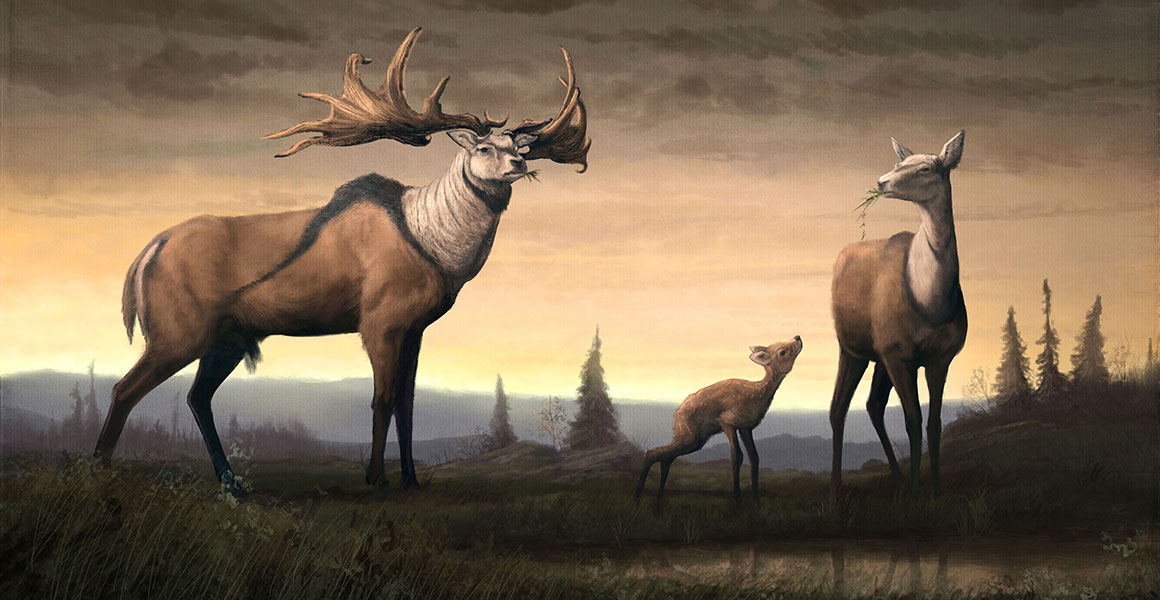
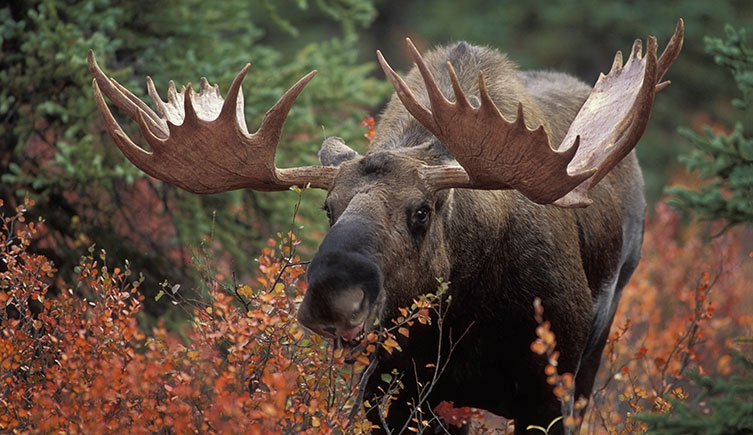

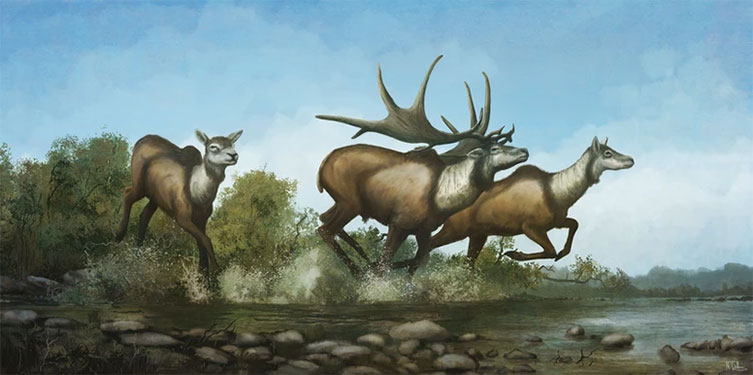
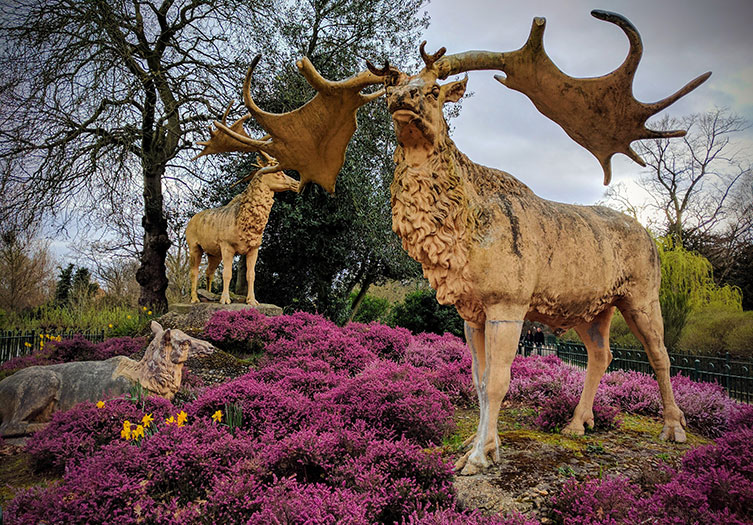
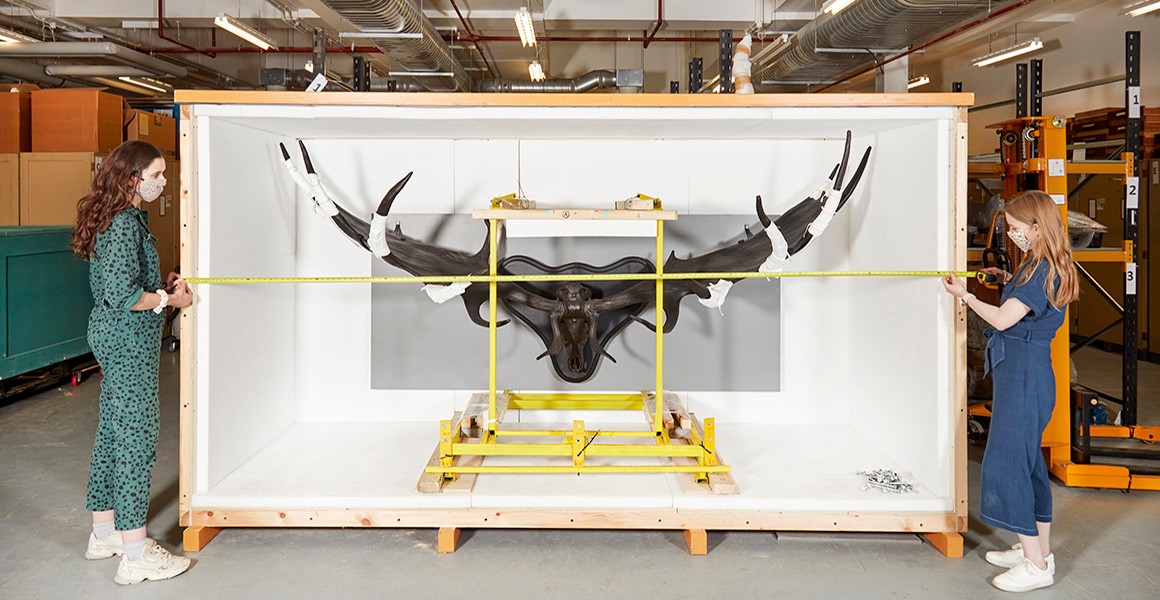


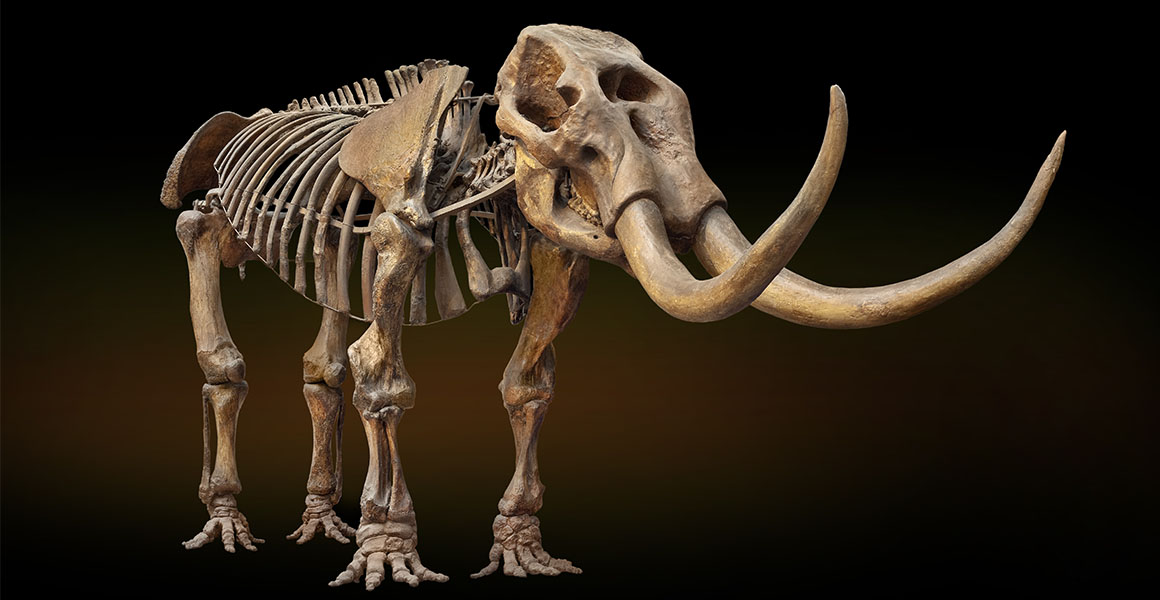

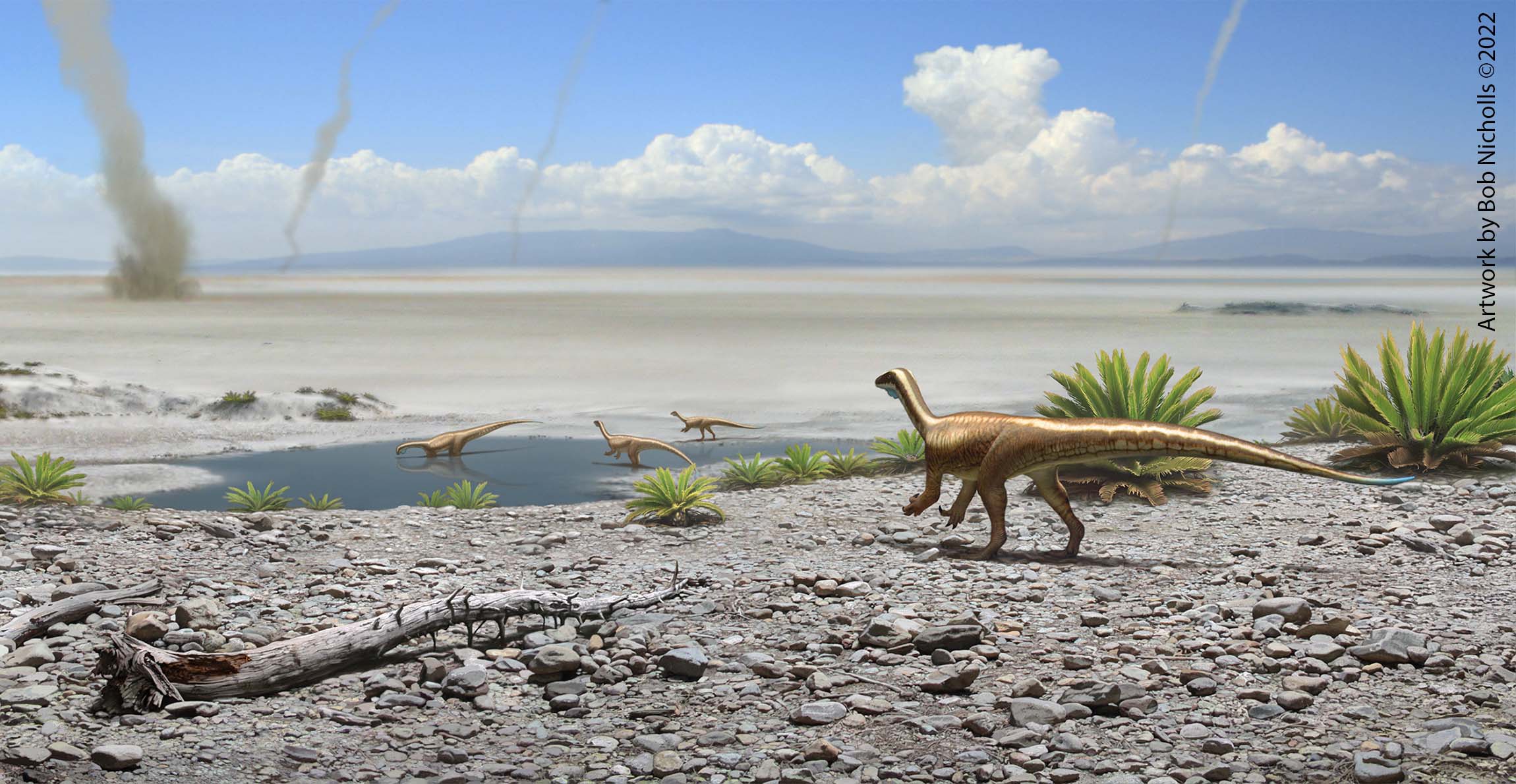
Don't miss a thing
Receive email updates about our news, science, exhibitions, events, products, services and fundraising activities. We may occasionally include third-party content from our corporate partners and other museums. We will not share your personal details with these third parties. You must be over the age of 13. Privacy notice.
Follow us on social media